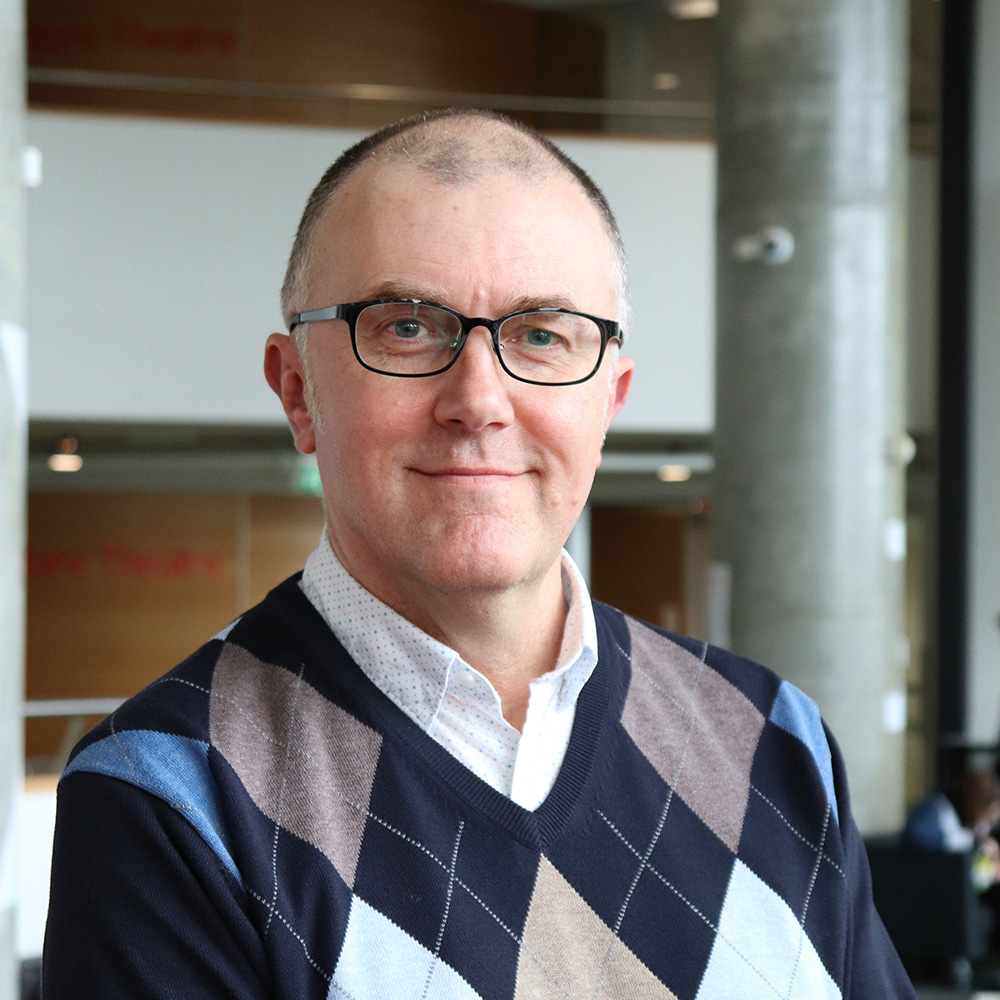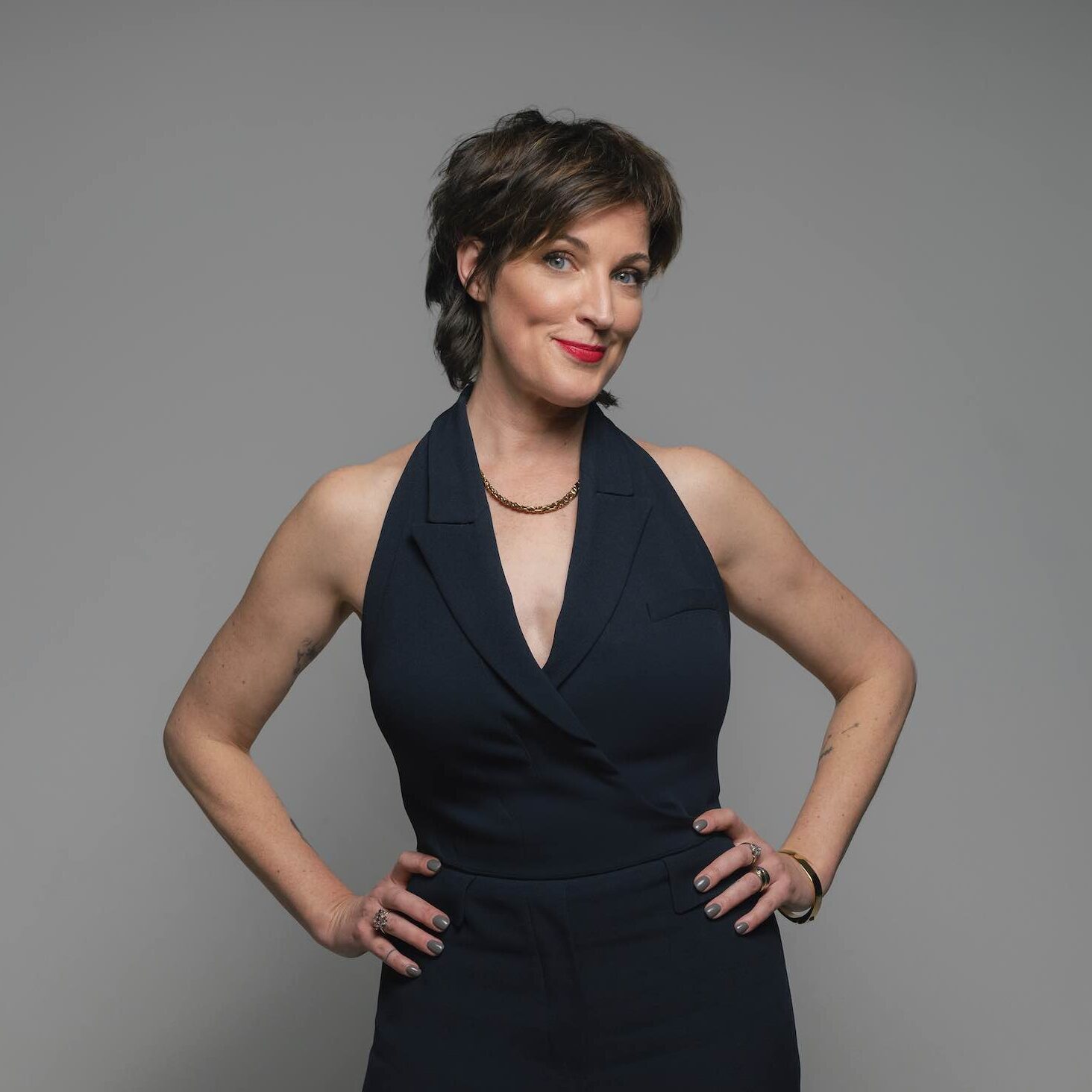
In Conversation with Andrew Haig

Andrew Haig is Department Chair of Communication Design and a Senior Lecturer at Swinburne University. He has been in the communication design industry for 39 years as an academic, a designer and as a design business owner. Andrew has worked in branding and identity design, publication design, exhibition and web design.
Since completing his PhD in 2019 he’s been back at Swinburne’s School of Design and Architecture, where his design adventure began as an undergraduate student in the 1980s. He also taught at Swinburne in the 1990s where he completed his Master of Design (by Research). Andrew’s current role is in managing staff and designing curriculum for communication design students – instead of a classroom teaching role (although he usually finds time to fit some of this in). Andrew is involved in the development of the big picture of where Swinburne Communication Design is headed.
How did you get into Graphic Design and ultimately education – was it by accident or design?
It was definitely by design. My father used to be an architectural draftsman – you know, the old school type with a drawing board and Rotring Rapidograph pens. The architectural practice he worked for was very aware of using graphic design to promote themselves and to improve their buildings with wayfinding and murals. They employed Lynda Warner, an alumnus of Swinburne Design, and dad would bring her work home. I was mesmerised by it. I loved art as a kid, but wasn’t too sure if I wanted to pursue a career in it (if art is indeed a ‘career’). Seeing Lynda’s graphic design work made a new career path visible to me. I decided to attempt to follow Lynda’s footsteps and enrol at Swinburne. I was lucky and got in and loved my time at Swinnie. I worked with Garry Emery during my industry placement year in 1982 and was invited back to work with him after finishing my degree. I loved it and I enjoyed the attention to detail that this studio pursued.
After eight years in industry I began to look for something a little different to do in design. A couple of jobs were advertised at Swinburne and I was offered one. I think why the move to academia suited me is that I enjoy analysis and reflective thinking. Whether it’s political analysis, analysis of historical events or analysis of why one design works better with an audience than another – I’m hooked. Thinking more deeply about design rather than the day-to-day ‘doing of design’ appeals to me. I was also keen to impart what I’d learnt in industry to students and to help guide them into relevant careers. Then, in 2002 after ten years teaching at Swinburne, I left. I had to ‘do’ design again. I started a design business that later became a partnership. We had some fantastic clients and I thoroughly enjoyed running a business. But things changed again. Fast-forward to 2019, I returned to Swinburne and I’m now in a management role at the School.
So far, what’s been the biggest challenge of your career?
Completing my PhD. Seven-plus years of hard (part-time) work. My thesis required in-depth analysis of the data I had collected where I walked 200km to test an app prototype on 50 people and I ended writing 75,000 words. Nothing remotely comes close to this!
Name one person in the industry you’ve truly admired.
This is a tough one. I’d probably say Michael Bierut of Pentagram. He and his team do incredible work. He’s also very articulate, presents extraordinarily well and always explains how a design solution and design in general improves situations and solves problems. Through his books and his blog Design Observer he has added much thoughtful discussion to our profession. Per Mollerup, who was my PhD supervisor, is another designer cut from similar cloth. He is a designer, but also writes books on design – his Brandmarks of Excellence: The History and Taxonomy of Trademarks and Wayshowing > Wayfinding: Basic & Interactive are great, insightful reads. I really admire designers who can design and also communicate about design to the wider world via writing and presenting.
If you could change something about the Graphic Design world what would it be?
Traditionally, graphic designers celebrate creativity and invention. We reward creative designs and an ability to think outside of the box – and these are important skills. But evidence-based design, where research is used alongside creativity can be incredibly powerful in demonstrating how ‘good design’ works. Creative ideas can be tested with data collected on people’s opinions on how graphic design has communicated something better, or made their life easier or more interesting. Collecting data (evidence) can be a brilliant way of presenting your ideas to clients too. You can walk into a meeting with a client and say “we’ve come up with two great ideas and our testing of them reveals that 75% of your customers recall the new name more easily with our branding (or similar)”. Research can be a wonderful tool for designers and I’d love to see it used more often.
Name three essential things someone starting out in Graphic Design should know from day one.
Be true to yourself. Know what type of designer you are and aim for these roles. Being a ‘T-shaped designer’ is a good start. Aim to have good general skills across a range of design areas (the horizontal part of the T), but have high-order skills in one area (the vertical part of the T) – this is likely to be your favourite area of graphic design.
Create networks of work colleagues, your design school alumni, and other design-related connections. These networks can be informal (hey, how about a coffee?) or more formal via professional organisations like AGDA and DIA. Your networks can provide career development, career opportunities and helpful mentorship. They are invaluable.
Look outside of graphic design to be a better designer. Read widely, watch all sorts of movies, visit galleries, have hobbies, engage with your community, play sports – don’t stay entirely in the design bubble. Be a human first, designer second. You’ll be better at your job.
What do you think the future holds for the education of Graphic Design?
One of the biggest things graphic design education needs to address is AI. Given what has been happening in the past few months with AI, Machine Learning and Chat GPT popping up in the media – it is clear that this area will have a massive impact on design education, in fact all education – and almost all work. An unattributed quote that often accompanies articles on AI sums the scenario up nicely: “we won’t be replaced by AI, but we will be replaced by people who use AI” (link). We need to examine what AI can do for us and see how we can be the masters of it. AI lacks humanity – an understanding of being human and having empathy for others, which is a key part of designing and graphic design education. This is very much a ‘watch this space’ situation and it is quite possible that AI will make the computer revolution of the 90s look merely like the entrée before the main AI course! Interesting times.
Share it around…






